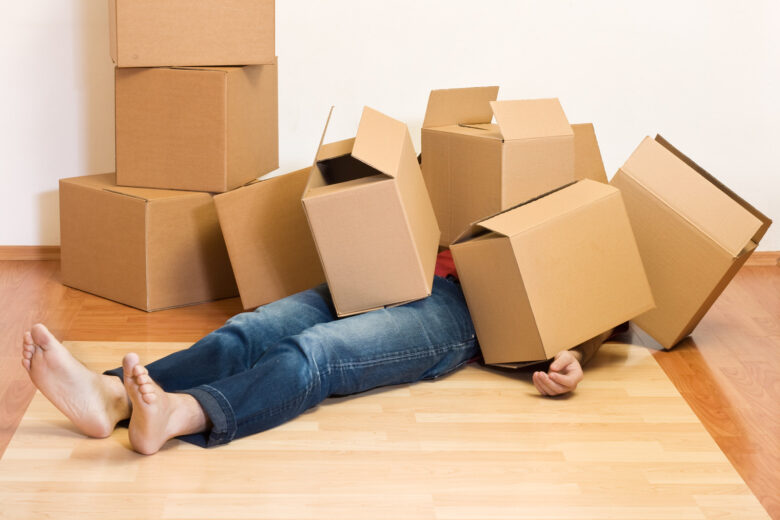Moving to a new home is an exciting yet challenging task, and when you opt for a DIY local move, there are several pitfalls to avoid.
While moving on your own can save money, it can also lead to stress and mishaps if not done carefully. In this guide, we’ll explore common mistakes to steer clear of when tackling a DIY local move.
Lack of Proper Planning
One of the most significant mistakes in a DIY local move is inadequate planning. It’s crucial to have a well-thought-out plan that covers every aspect of your move, from packing to transportation and unpacking. Create a checklist and timeline to ensure you don’t forget any essential steps.
Start by assessing the items you plan to move, and decide what you’ll keep, sell, donate, or discard. This step is vital for decluttering and making your move more manageable.
Also, remember to obtain the necessary packing supplies, such as boxes, tape, bubble wrap, and packing paper, well in advance.
Underestimating Packing Time

Moving to a new home and packing always takes longer than you think. Many people make the mistake of underestimating the time required to pack their belongings, leading to last-minute stress and disorganized packing. To avoid this, start packing well ahead of your move date.
Begin with items you use less frequently, like seasonal clothing, decor, and kitchenware. Properly label each box with its contents and the room it belongs to, making the unpacking process more efficient.
Allocate extra time for disassembling furniture and electronics, as these tasks can be time-consuming.
Overloading Boxes
Another common mistake is overloading boxes. While you may be tempted to maximize space, heavy boxes can be challenging to lift and transport, increasing the risk of injury.
Instead, pack boxes with a reasonable weight and distribute heavy items evenly among several boxes. Use smaller boxes for heavy items like books and kitchen appliances.
Remember to use proper lifting techniques and seek help when needed, especially for large or bulky items. It’s better to take extra trips than to risk injuring yourself or damaging your belongings.
Neglecting Furniture Protection
Furniture is often a significant investment, and neglecting its protection during a DIY local move is a common mistake. Scratches, dents, and other damages can occur if you don’t take the necessary precautions.
Use furniture blankets, plastic wrap, or furniture pads to safeguard your items during transportation.
Additionally, disassemble furniture when possible to make it easier to move and prevent damage. Keep all hardware and screws in labeled bags to ensure you can reassemble your furniture correctly at your new home.
Ignoring Safety Measures

Safety should be a top priority during a DIY local move. Neglecting safety measures can lead to accidents and injuries. Make sure to wear appropriate clothing and footwear, and use moving equipment like dollies or hand trucks when moving heavy items.
Be cautious when navigating stairs and tight spaces, and enlist the help of friends or family members to assist with the move.
Another safety consideration is to secure your belongings in the moving vehicle properly. Use straps or ropes to prevent shifting during transit and reduce the risk of damage. Drive cautiously and follow traffic rules to ensure a safe journey to your new home.
Inventory Management
Proper inventory management is a critical aspect of a successful DIY local move. Before you start packing, take the time to create a detailed inventory of all your belongings. This inventory should include a list of items, their conditions, and even photographs if possible.
Keeping a record of your possessions not only helps you keep track of everything but also serves as a valuable reference in case of any damages or loss during the move.
Additionally, having an inventory can be beneficial for insurance purposes, making it easier to file claims if needed. Label your boxes with corresponding inventory numbers or item descriptions to match your records.
This level of meticulous organization ensures that nothing gets left behind or misplaced during the move, making the entire process more efficient and less stressful.
Effective Communication and Coordination

When enlisting the help of friends or family members for your DIY local move, effective communication and coordination are key to a smooth operation.
Assign specific roles and responsibilities to each helper based on their strengths and capabilities. Clearly communicate your expectations, timelines, and any special handling instructions for fragile or valuable items.
Having a team huddle before the move can help everyone understand their roles and ensure that everyone is on the same page. Establish a communication system, such as walkie-talkies or a group chat, to stay connected throughout the move. Plan regular check-ins to assess progress and address any challenges that may arise.
Furthermore, consider providing refreshments and breaks to keep everyone energized and motivated. Effective communication and coordination among your moving team can make the entire process more efficient and less stressful for everyone involved.
Budget Management
Managing your budget effectively is a crucial aspect of a DIY local move. Moving expenses can accumulate quickly, and without proper financial planning, you may find yourself facing unexpected costs. Start by creating a comprehensive budget that includes all anticipated expenses, such as truck rental fees, fuel costs, packing supplies, and any additional services you may require.
Be sure to research and obtain multiple quotes for services like truck rental to find the most cost-effective options. As you progress with your move, track your spending carefully to ensure you stay within your budget. If unforeseen expenses arise, adjust your budget accordingly.
Consider setting aside a contingency fund for unexpected costs to avoid financial stress during the move. By diligently managing your budget, you can ensure that your DIY local move remains cost-effective and financially manageable. Proper budgeting will contribute to a smoother and more financially stress-free relocation experience.
Summary

In conclusion, a DIY local move can be a cost-effective option, but it requires careful planning and attention to detail.
By avoiding common mistakes like lack of planning, underestimating packing time, overloading boxes, neglecting furniture protection, and ignoring safety measures, you can make your DIY move a smoother and safer experience.
If you find the process overwhelming, consider consulting a professional moving and storage company like Paradise Moving & Storage for guidance and support.


